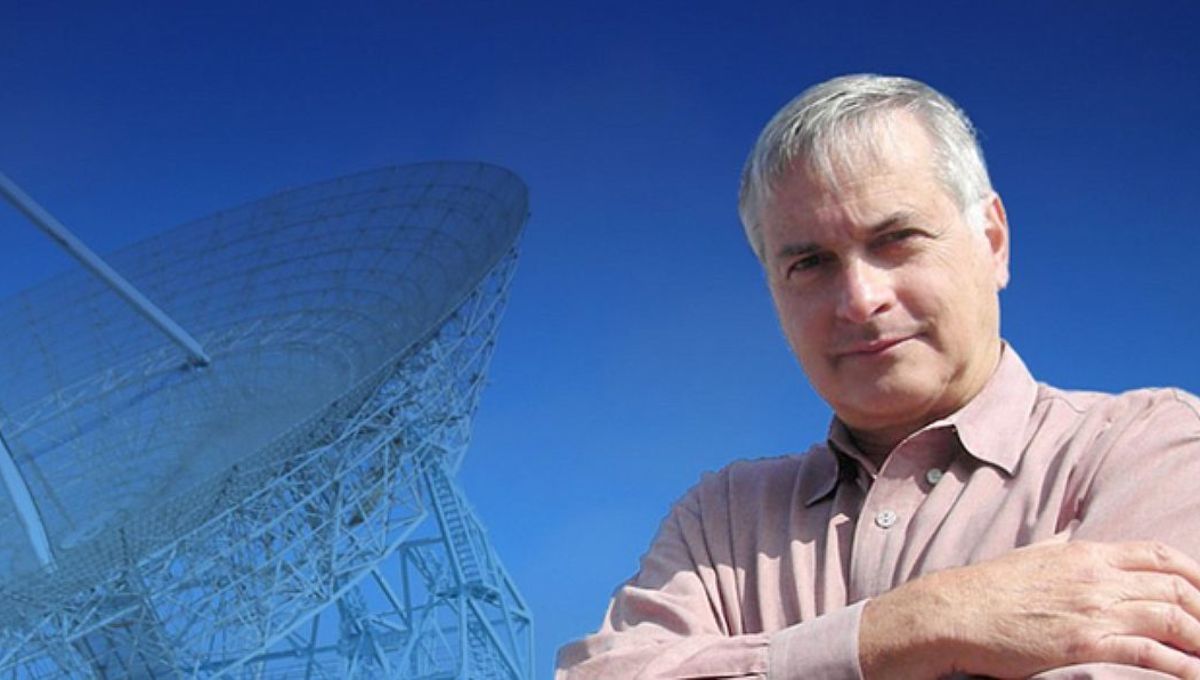Apollo 11 Moon Landing Showed That Aliens Might Be More Than Science Fiction
Article by Brandon Specktor July 20, 2019 (livescience.com)
• On July 20, 1969, astronauts Neil Armstrong and Buzz Aldrin walked on the Moon. Four days later, the astronauts were quarantined aboard the USS Hornet for a 21-day isolation period. This was to ensure that no potentially hazardous lunar microbes had hitchhiked back to Earth with them. The NASA scientists found no microbial aliens on the astronauts themselves or in the 50 pounds of lunar rocks they brought back.
• Senior astronomer at the SETI Institute, Seth Shostak (pictured above), thinks that the Apollo 11 Moon mission did bring back aliens, in a sense. “Today, about 30 percent of the public thinks the Earth is being visited by aliens in saucers, despite the evidence of that being very poor,” says Shostak. “I think the Moon landing had something to do with that.” Live Science.com recently spoke with Shostak to find out more about how the Moon landing changed the scientific community’s pursuit of aliens and the world’s perception of them.
• LS: What did the Moon landing teach humans about extraterrestrial life? Shostak: Not too much. By 1969, most scientists expected the Moon would be dead. The Moon has no atmosphere, no liquid, and temperatures that range from hundreds of degrees to minus hundreds of degrees. “It’s awful!” But the Apollo missions showed that you could travel from one world to another on a rocket – and maybe aliens could, too. Suddenly, the universe was a little more open.
• LS: In 1969, did scientists think there might be aliens somewhere else in the solar system? Shostak: Mars was the ‘Great Red Hope’ of extraterrestrial life in the solar system. People were very optimistic in 1976 when the Viking landers plopped down onto Mars that there would be life. There wasn’t. These days, scientists will suggest looking at the moons of Jupiter or Saturn, such as Enceladus, where geysers shoot possible microbial material right into space, so you don’t have to land a spacecraft on the surface to find it.
• LS: What did the search for extraterrestrial intelligence (SETI) look like around 1969? Shostak: Modern SETI experiments began in 1960 with astronomer Frank Drake and his Project Ozma, where he searched for inhabited planets around two stars using a radio telescope. (After four years of searching, no recognizable signals were detected.) By 1969, SETI research was being conducted informally by people who were working with telescopes in their spare time, looking up the coordinates of nearby stars and hoping to pick up radio waves. It wasn’t really organized until the NASA SETI program began in the 1970’s with a budget of $10 million a year. In 1993, a democratic congressman from Nevada killed the SETI funding, in spite of the fact that the NASA program profited from the public’s fascination with aliens more than from anywhere else.
• [Editor’s Note] Previous articles have established that Seth Shostak and SETI are Deep State assets whose objective is to lull the public into complacency by reassuring them that every planet and heavenly body, besides the Earth, is ‘dead’ and unable to support life beyond possible microbial life. Lately, SETI and Shostak have been shilling for the restoration of Deep State government funding, so they can line their pockets while maintaining the ongoing Deep State cover-up of a teeming extraterrestrial presence on, within, and orbiting our planet.
On July 20, 1969, astronauts Neil Armstrong and Buzz Aldrin walked on Earth’s moon for the first time in human history. Four days later, they — along with Apollo 11 command module pilot Michael Collins — were locked up on an American battleship in the middle of the Pacific Ocean.
The triumphant astronauts were in quarantine. Per a NASA safety protocol written half a decade earlier, the three lunar visitors were escorted directly from their splashdown site in the central Pacific to a modified trailer aboard the USS Hornet, where a 21-day isolation period began. The objective? To ensure that no potentially hazardous lunar microbes hitchhiked back to Earth with them.
Of course, as NASA quickly confirmed, there were no tiny aliens lurking in the astronauts’ armpits or in the 50 pounds (22 kilograms) of lunar rocks and soil they had collected. But despite this absence of literal extraterrestrial life, the Apollo 11 astronauts still may have succeeded in bringing aliens back to Earth in another way that can still be felt 50 years later.
“Today, about 30 percent of the public thinks the Earth is being visited by aliens in saucers, despite the evidence of that being very poor,” Seth Shostak, senior astronomer at the SETI Institute — a nonprofit research center focused on the search for alien life in the universe — told Live Science. “I think the moon landing had something to do with that.”
Shostak has been searching for signs of intelligent life in the universe for most of his life (and, fittingly, shares a birthday with the Apollo 11 landing). Live Science recently spoke with him to find out more about how the moon landing changed the scientific community’s pursuit of aliens and the world’s perception of them. Highlights of our conversation (lightly edited for clarity) appear below.
LS: What did the moon landing teach humans about extraterrestrial life?
FAIR USE NOTICE: This page contains copyrighted material the use of which has not been specifically authorized by the copyright owner. ExoNews.org distributes this material for the purpose of news reporting, educational research, comment and criticism, constituting Fair Use under 17 U.S.C § 107. Please contact the Editor at ExoNews with any copyright issue.
